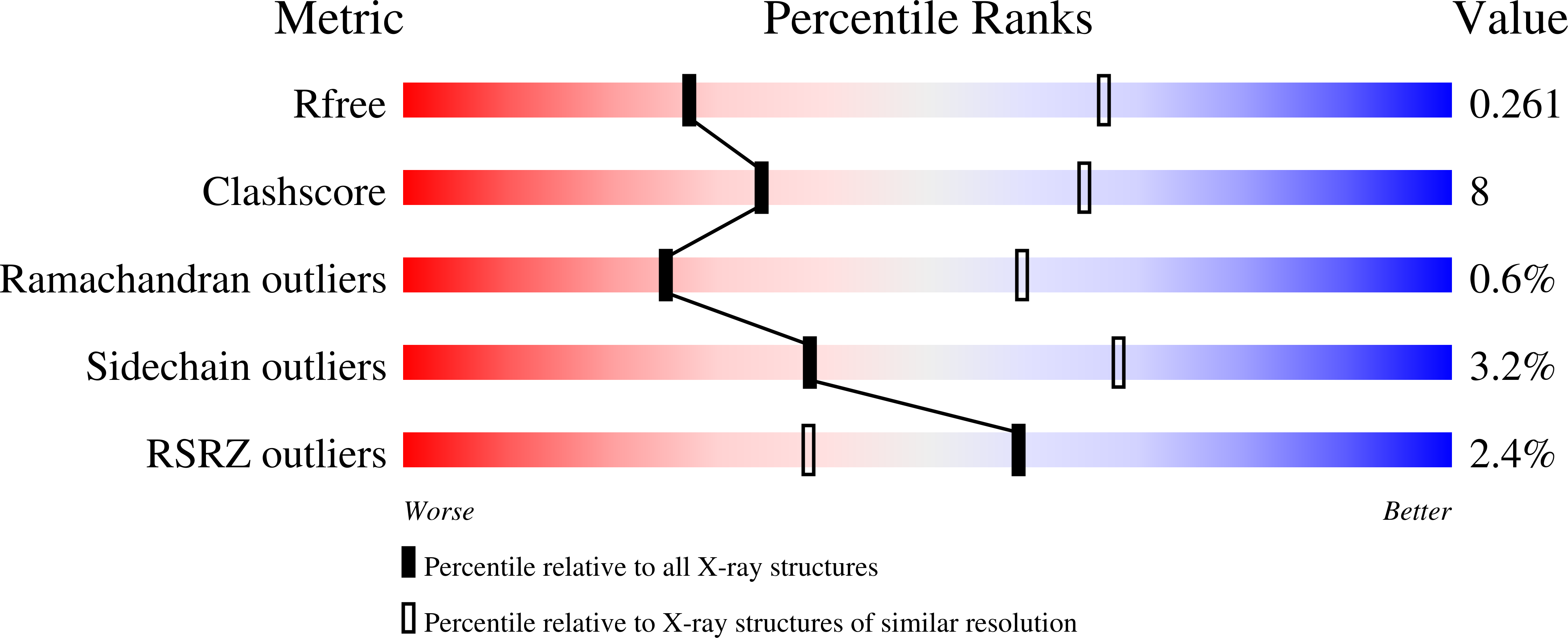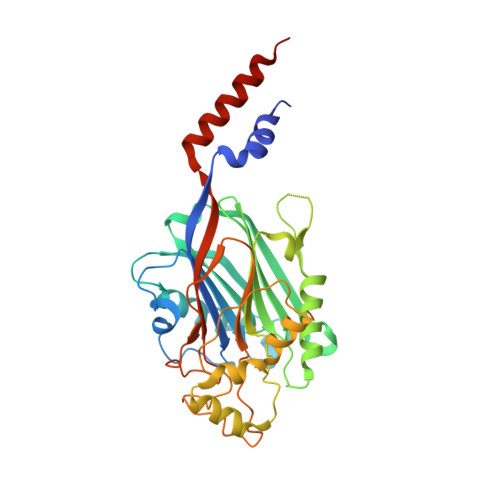Structural Basis for Phosphoinositide Substrate Recognition, Catalysis, and Membrane Interactions in Human Inositol Polyphosphate 5-Phosphatases.
Tresaugues, L., Silvander, C., Flodin, S., Welin, M., Nyman, T., Graslund, S., Hammarstrom, M., Berglund, H., Nordlund, P.(2014) Structure 22: 744
- PubMed: 24704254
- DOI: https://doi.org/10.1016/j.str.2014.01.013
- Primary Citation of Related Structures:
3MTC, 3N9V, 3NR8, 4CML, 4CMN - PubMed Abstract:
SHIP2, OCRL, and INPP5B belong to inositol polyphosphate 5-phophatase subfamilies involved in insulin regulation and Lowes syndrome. The structural basis for membrane recognition, substrate specificity, and regulation of inositol polyphosphate?5-phophatases is still poorly understood. We determined the crystal structures of human SHIP2, OCRL, and INPP5B, the latter in complex with phosphoinositide substrate analogs, which revealed a?membrane interaction patch likely to assist in sequestering substrates from the lipid bilayer. Residues recognizing the 1-phosphate of the substrates are highly conserved among human family members, suggesting similar substrate binding modes. However, 3- and 4-phosphate recognition varies and determines individual substrate specificity profiles. The high conservation of the environment of the scissile 5-phosphate suggests a common reaction geometry for all members of the human 5-phosphatase family.
Organizational Affiliation:
Structural Genomics Consortium, Karolinska Institutet, 17177 Stockholm, Sweden.



















